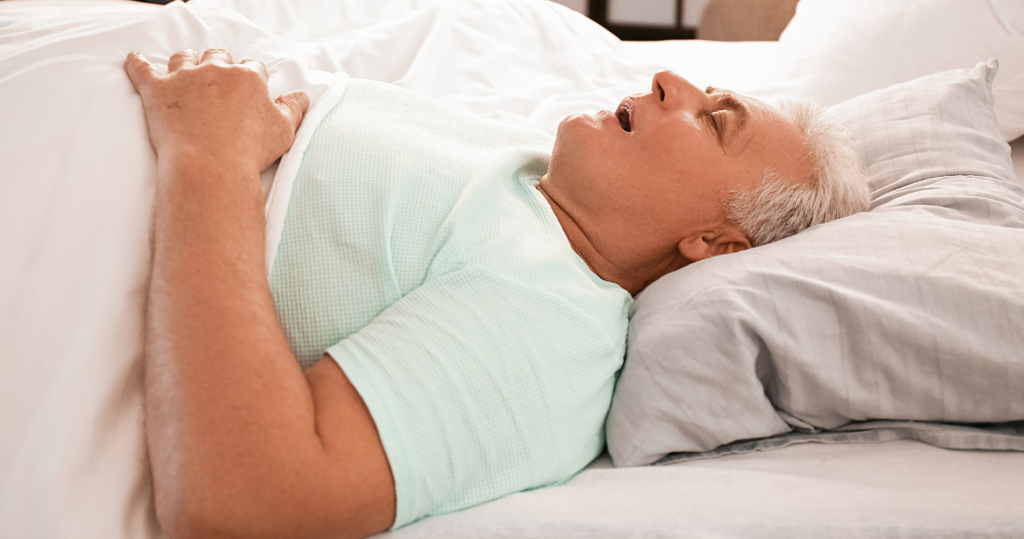When it comes to our health, everyone agrees that exercise is crucial. Strength training is just as vital as a cardiovascular exercise for keeping our hearts and muscles healthy. But big muscles aren’t what this blog is about.
Our purpose here is to discuss the sole skeletal-system-free muscle. The tongue is the most familiar muscle in dentists’ practices. This segment educates us on the connection between tongue exercises and obstructive sleep apnea.
Besides being responsible for taste, the tongue’s many functions make it the largest muscle in the mouth. As a result, it may significantly impact your breathing when you’re asleep. Obstructive Sleep Apnea is caused by the tongue and other soft tissues in the throat and mouth blocking the airway.
Using a continuous positive airway pressure (CPAP) machine to combat sleep apnea is the most well-known and effective method. However, many people are now more interested in finding a dependable CPAP option for various reasons (comfort, loudness, travel concerns).
In studies, exercising the tongue has been linked to fewer occurrences of sleep apnea. In addition, scientific studies reveal that doing these exercises regularly for 15-30 minutes can cut your apneas in half! Sleep medicine professionals can fit you with a custom oral appliance. At the same time, alterations to your lifestyle and some simple mouth exercises can also be helpful.
Only the third type, oral exercises, will be discussed in this article. If you struggle with sleep apnea, you can relieve your symptoms by strengthening your neck, tongue, and mouth muscles. But first, we will review some specific techniques to maximize the benefits of your oral exercise routine.
Why Does Sleep Apnea Cause us to Snore?

Snoring can indicate sleep apnea, but it’s not diagnostic. You snore when your throat tissues relax, and air flows over them. On the other hand, sleep apnea may develop if your throat muscles become so relaxed that they repeatedly close up while you sleep.
The airway repeatedly closes with sleep apnea because the throat muscles relax night after night. As a result, you may have obstructive sleep apnea, which can cause you to snore loudly, which may be heard by your partner. Snoring and other symptoms suggest that you may need treatment for a sleep issue.
Snoring and sleep apnea: How can exercises for the mouth help?
Loss of muscular tone in the airway, improper placement of the tongue (“tongue posture”), and mouth breathing during sleep all contribute to the development of snoring and OSA. Conversely, toning the airway and tongue muscles with workouts of the mouth and throat can facilitate nasal breathing.
Consistent mouth and throat exercises strengthen the muscles that support the mouth and airway, similar to how consistently working out at the gym may tone the arms. More toned muscles are less likely to flail and quiver.
These routines are more formally known as myofunctional therapy or oropharyngeal exercises. The tonsils, adenoids, and soft palate are also a part of the oropharynx, located at the back of the mouth, and includes the back of the tongue and the sides of the throat.
Oropharyngeal exercises performed repeatedly during waking hours have been shown to reduce tissue flexibility and nighttime vibrations. In addition, toning these muscles has been demonstrated in multiple trials to be effective in reducing snoring and mild cases of obstructive sleep apnea.
Exercises For Sleep Apnea You Can do Everyday
The guys on your medical staff likely referred to these as oropharyngeal exercises. Tongue workouts, throat and mouth exercises, and uvula toning are part of this repertoire. In addition, the soft tissues at the back of the throat, the roof of the mouth (the soft palate), and the lips are targeted for muscular strengthening.
If possible, spend at least 30 minutes per day doing these specific exercises for sleep apnea, and do so in as many sessions as possible.
If you can only perform them on your commute or during your lunch break, do it! Most individuals feel silly doing these exercises in public and would rather do them at home.
If you can’t get in as many reps as you’d want, move on to the next activity. You should be able to work up to 10 repetitions of each of the exercises below over time.
1. Roar Like a Tiger

By toning the long, slender muscles in your throat, you can reduce the severity of your OSA symptoms. Make like a tiger and roar by expanding your mouth wide and making a face like one is going to.
Make as much room as possible between your teeth and move your tongue down as far as you can (as if you were trying to lick your chin) while keeping your mouth open as wide as possible. Uvula elevations of five seconds each, repeated ten times, are recommended.
2. Awaken the Singer Within You

The muscles of the roof of the mouth and upper throat weaken naturally with age, but singing can help counteract this effect. Three months of regular singing exercises helped people with moderate to mild sleep apnea.
Singing and playing wind instruments have been cited in a recent quantitative study as possible methods to alleviate sleep apnea symptoms, especially moderate sleep apnea. Beginning with extended, monotonous chants of individual vowel sounds is a great way to warm up your vocal cords.
3. Tongue Slides

Sleep apnea is typically brought on by the tongue falling to the back of the throat, and studies have shown that completing daily tongue exercises can help alleviate this problem. In addition, the tongue slip is a fantastic way to strengthen your tongue.
Glide your tongue backward while pressing its tip against your hard palate. It’s recommended that you do this 20 times.
4. Stretch Soft Palate

When you expand your mouth as wide as possible and utter “ah” from the back of your throat, you’re giving your soft palate a nice stretch. Go on like this for the next 20 seconds. Then, stop talking for five seconds and repeat five to 10 times. Another useful activity is soft-palate blowing.
To perform this sleep apnea exercise, seal your mouth and inhale slowly through your nose, squeeze your lips together, and exhale through the mouth. Next, you should attempt to blow out air for 5 seconds, ten times daily.
5. Jaw Release

If you clench your teeth, it can make it difficult to breathe. Instead, when your mouth is closed, place your tongue in its resting position against the roof of your mouth, and then arch it against the roof of your mouth, sliding your tongue’s tip backward as far as it will extend along the roof of your mouth. Open your mouth gradually until your tongue no longer touches the inside of your mouth while in this posture: 5 minutes, twice a day.
6. Hold a Spoon

Put the spoon’s handle in your mouth and hold it there for 10 seconds using only your lips. It would help if you didn’t put the handle in your mouth. Maintain a flat plane with the floor if you can. You can add weight to the spoon by stacking other little objects on it as your strength increases (i.e., sugar cube). It would help if you repeated this ten times.
7. Yogic Breathing

In case you were wondering, yoga is practiced by more than just hippies and hipsters with man buns. In one form or another, yoga can be a positive experience for just about anybody.
One of the most easily accessible aspects of this ancient practice, yogic breathing, involves performing exercises designed to strengthen the muscles that line the airway passages—those who have trouble breathing via the nose benefit most from this.
Nadi Shodhana is the term used to describe this practice in yoga. First, bring the ring finger and thumb of your right hand together. Because of this, you’ll be compelled to raise your index and middle fingers while leaving your pinky dangling.
It’s advisable to take this procedure slowly before putting everything together in order. Don’t let the long list of instructions put you off; take things slowly and carefully.
8. Pronounce Vowels

Vowel sounds use the throat muscles. Therefore, practicing them on purpose can be a good way to get those muscles in shape.
It would help if you practiced the vowel sounds a, e, i, o, and u. First, say each vowel normally, then experiment with pronouncing it more slowly or quickly. To practice this, try this: for 10–20 repetitions, make the same sound and switch to another sound. Similarly, you can blend sounds (like “ooo-aaah”) and repeat them.
The Bottom Line
Regarding snoring and OSA, mouth exercises can help but aren’t a cure. Therefore, mixing them with your doctor’s other treatment recommendations may be necessary even if they prove useful.
The exercises for the mouth are very similar to those used in speech therapy. To get more detailed instructions on performing these exercises, patients should consult a speech therapist or other professional with expertise in strengthening the oral cavity.

